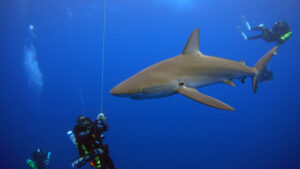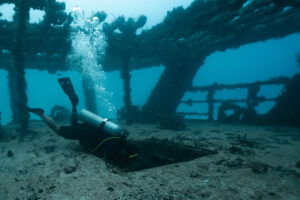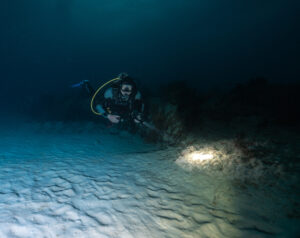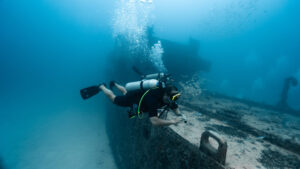What is a Knot?
A knot is a unit of speed measurement used predominantly in maritime and aviation contexts. It is employed extensively in the fields of nautical navigation and scuba diving. The term “knot” is derived from the practice of counting the number of knots on a log line that unspooled from a ship over a specific period of time, which provided a measure of the ship’s speed. Today, the knot is defined as one nautical mile per hour and serves as a valuable metric for scuba divers and watercraft operators alike.
Definition and Conversion
One knot is equivalent to one nautical mile (6080.20 feet) per hour, or approximately 1.151 miles per hour. In terms of the International System of Units (SI), one knot is equal to 0.514 meters per second. To convert a velocity value from feet per second (ft/s) to knots, the given number should be multiplied by 0.592. Conversely, to convert knots to feet per second, the given number should be multiplied by 1.689.
Historical Background
The knot’s origins date back to the Age of Sail when sailors needed an accurate and consistent method for determining a ship’s speed. The log line, a rope with evenly spaced knots tied along its length, was employed for this purpose. A piece of wood or “chip log” was attached to the end of the log line and cast overboard. The line would then be allowed to unspool for a predetermined period, typically measured using a sandglass. The number of knots that had passed over the side of the ship was counted, and this value would provide an estimate of the vessel’s speed in “knots.”
Significance in Nautical Navigation
The knot remains the primary unit of speed measurement in nautical navigation today. Maritime charts, navigational instruments, and weather reports frequently express distances and speeds in nautical miles and knots, respectively. The knot is particularly useful when calculating a vessel’s estimated time of arrival (ETA) at a given destination, as well as for determining the drift and set of currents, which are vital factors when navigating near coastlines, reefs, and other marine hazards.
Relevance to Scuba Diving
In scuba diving, the knowledge of knots and their conversion to other units of speed is essential for various reasons:
- Currents and Dive Planning: Scuba divers must account for underwater currents when planning a dive. Strong currents can have significant effects on air consumption, navigation, and safety. Understanding the speed of the currents in knots allows divers to adjust their dive plan accordingly, including selecting the appropriate entry and exit points and determining the necessary decompression stops.
- Drift Diving: Drift diving is a popular technique that involves diving in a current and allowing it to carry the diver along. Knowledge of the current’s speed in knots is crucial for this type of diving, as it helps divers anticipate the necessary adjustments to their buoyancy, position, and dive time.
- Tidal Currents: Tidal currents, which are caused by the gravitational pull of the moon and the sun, can significantly impact dive conditions. Tidal currents are typically expressed in knots and can vary depending on the location and time of day. Scuba divers must factor tidal currents into their dive plans to ensure a safe and enjoyable experience.
- Surface Interval Calculations: In multi-level diving, the surface interval is the time spent on the surface between dives, allowing the body to off-gas nitrogen. To accurately calculate the surface interval, divers must account for the speed of their watercraft in knots, as well as the distance to the next dive site.
Key Takeaways
The knot is an indispensable velocity unit in maritime navigation and scuba diving, providing a consistent and easily understood means of measuring speed in aquatic environments. Its historical significance and continued use in modern nautical contexts underscore its importance for sailors, pilots, and scuba divers alike.
By understanding the knot and its conversion to other units of speed, scuba divers can more effectively plan and execute dives while accounting for underwater currents, drift diving techniques, tidal currents, and surface interval calculations. The ability to accurately assess and adapt to varying conditions ensures a safer and more enjoyable diving experience.
In summary, the knot is a vital metric in the world of scuba diving and nautical navigation, deeply rooted in maritime history and still very much relevant today. Its use in assessing and addressing aquatic conditions contributes to the overall safety, efficiency, and enjoyment of both recreational and professional scuba diving adventures.

















